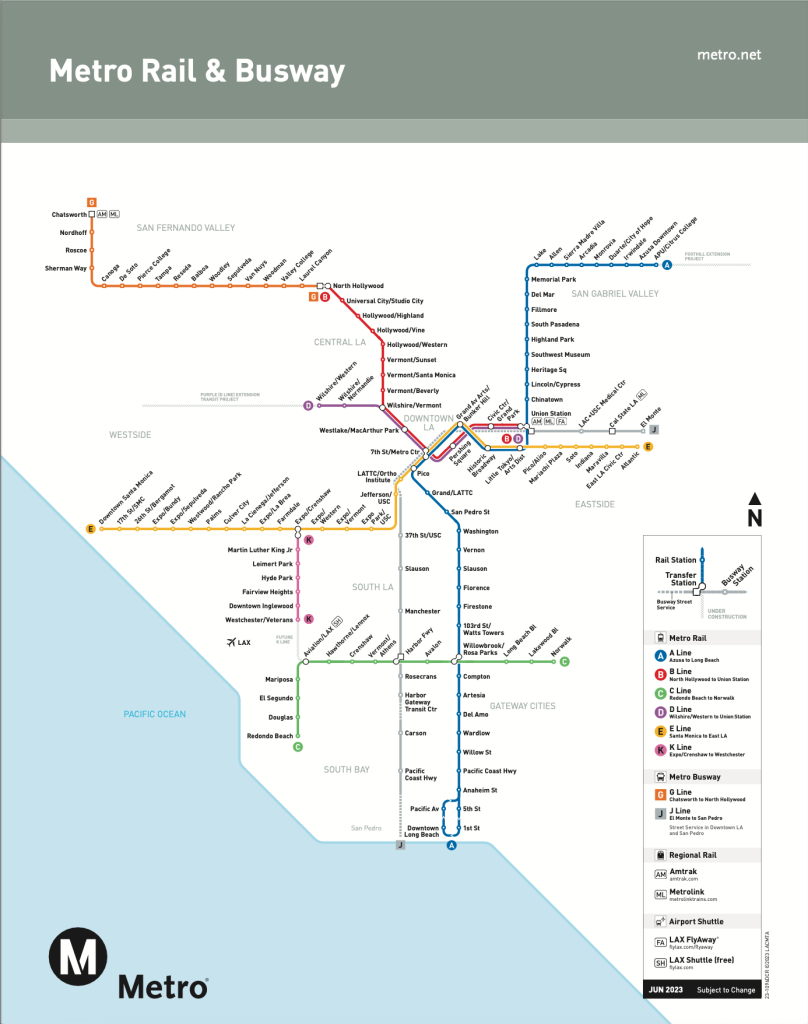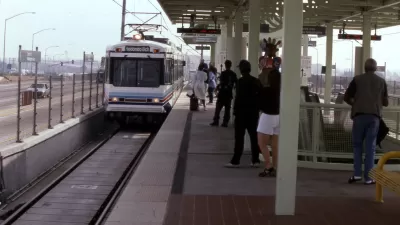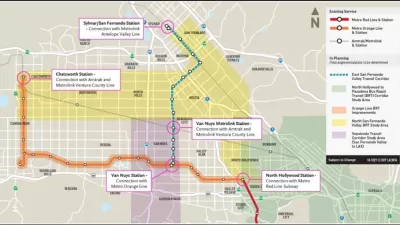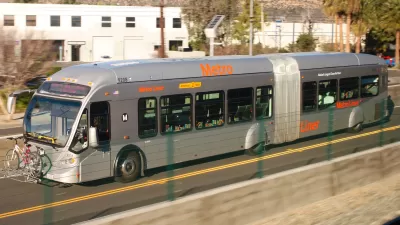Three rail lines have become two rail lines in Los Angeles, providing one-seat rides from four corners of Los Angeles County.

The Los Angeles County Metropolitan Transportation Authority (Metro) opened the long-awaited Regional Connector to the public on June 16, completely redrawing Metro’s rail service map in the process.
“The 1.9 miles of new track laid allows light-rail trains to travel between Union Station and the busy 7th St./Metro Center Station in downtown LA’s Financial District,” according to an article by Brandon Lewis for Mass Transit magazine. “Bridging the gap allows L.A. Metro to merge the hook-shaped L (Gold) line with the A (Blue) and E (Expo) lines, creating two serpent-like train lines where there were once three.”
In effect, the two newly formed lines allow one-seat light rail rides from Azusa to Long Beach on the A Line, and East L.A. to Santa Monica on the E Line. The project overcame delays in 2019 and a lawsuit in 2012 to come to fruition.
The new project also delivered three new underground stations to serve the newly formed A and B lines in downtown—the Little Tokyo/Arts District Station, the Historic Broadway Station, and the Grand Avenue/Bunker Hill Station.
Local coverage of the Regional Connector’s contribution to transit in Los Angeles is available from L.A. Taco and the Los Angeles Times [paywall]. See also Metro’s Regional Connector Transit Project page for more information.

FULL STORY: L.A. Metro celebrates opening of Regional Connector

Maui's Vacation Rental Debate Turns Ugly
Verbal attacks, misinformation campaigns and fistfights plague a high-stakes debate to convert thousands of vacation rentals into long-term housing.

Planetizen Federal Action Tracker
A weekly monitor of how Trump’s orders and actions are impacting planners and planning in America.

Chicago’s Ghost Rails
Just beneath the surface of the modern city lie the remnants of its expansive early 20th-century streetcar system.

Bend, Oregon Zoning Reforms Prioritize Small-Scale Housing
The city altered its zoning code to allow multi-family housing and eliminated parking mandates citywide.

Amtrak Cutting Jobs, Funding to High-Speed Rail
The agency plans to cut 10 percent of its workforce and has confirmed it will not fund new high-speed rail projects.

LA Denies Basic Services to Unhoused Residents
The city has repeatedly failed to respond to requests for trash pickup at encampment sites, and eliminated a program that provided mobile showers and toilets.
Urban Design for Planners 1: Software Tools
This six-course series explores essential urban design concepts using open source software and equips planners with the tools they need to participate fully in the urban design process.
Planning for Universal Design
Learn the tools for implementing Universal Design in planning regulations.
planning NEXT
Appalachian Highlands Housing Partners
Mpact (founded as Rail~Volution)
City of Camden Redevelopment Agency
City of Astoria
City of Portland
City of Laramie





























